21 December 2020
Today we continue to talk about the miraculous wonders of nature. In the first part, we told readers about the Karakiya depression, the underground and rock mosques of Shopan ata, Shakpak Ata, the Kyzylkup tract, and the endless Bozzhyr Valley. Today we will reveal the secrets of the great love of the Japanese for the Mangyshlak peninsula, tell you the amazing mountain Otp tau, where they begin to celebrate the beginning of spring with the custom of amal, as well as about the amazing and miraculous properties of herbs that grow literally under our feet.

Once again, a large group of journalists throughout the infotour was accompanied by an amazing person-an encyclopedist, local historian, professional guide Lyudmila Korovina, who devoted 30 years of her life to the service of selfless study of the history of Mangistau. We already talked about it in the last issue. And now we will be carried away into the depths of the huge fantastic ocean of Tethys, where all life on the planet Earth originates.
tethys-the source of life
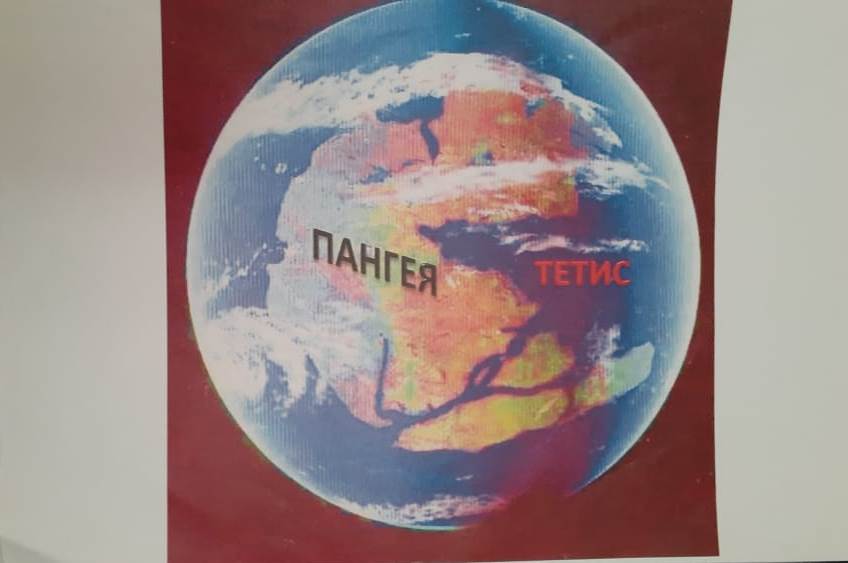
Historians believe that at a time when there was neither land nor man, there was one huge ocean of Tethys, at the bottom of which volcanoes began to erupt and the earth shook. As a result, the ocean began to divide into seas, and the bottom began to rise and gradually formed a huge piece of land, which was called Pangea. Then it is divided into two large pieces – Laurasia and Gondwana. And later these lands were divided into six continents, which now exist. As proof that this ocean really existed on Mangistau land billions of years ago, many artifacts are found here – shark teeth, fish spines, all kinds of amonites-extinct cephalopods, including a hardened stone snail, a sea urchin with a shell. By the way, according to our guide, today the Aral Sea can rightly be considered a remnant of the Tethys, and the Caspian, Black and Mediterranean Seas are considered to be the current representatives of the Tethys.
Otpan tau or Adai ata
Mount Otpan tau (fire mountain) with a height of 535 meters was originally intended to warn local residents of approaching enemy raids. Bonfires were lit at the highest point of the mountain. Thus, all nearby villages received the signal. In clear weather, the lights of Otp tau can be seen at a distance of 250 km in Manats. the current generation decided to perpetuate the memory of those past historical events and built minarets with golden domes that shine in the sunlight.
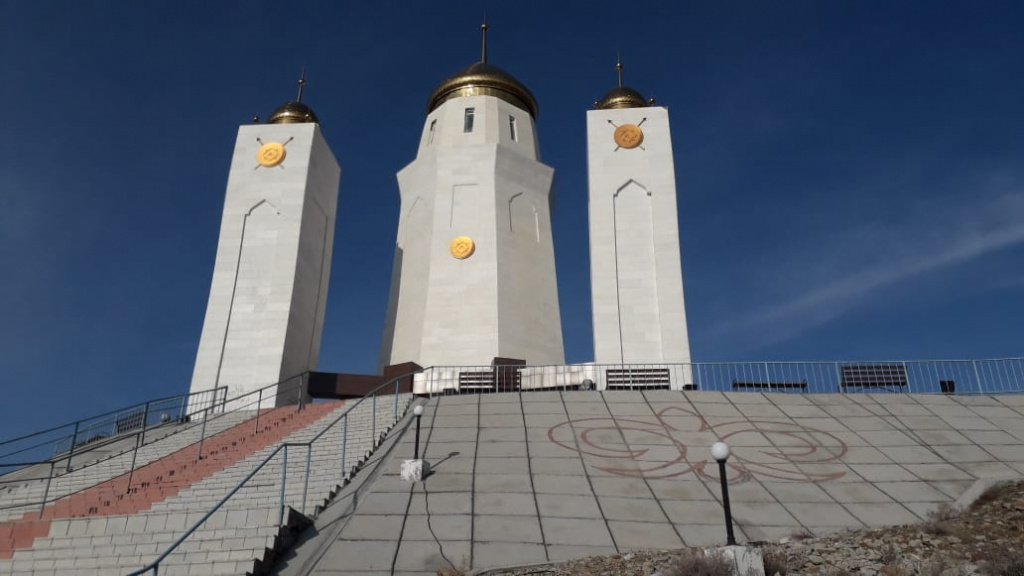
To reach the highest point of Otpan tau, it is necessary to overcome 362 steps. The highest minaret is dedicated to Father Adai, the lower one is dedicated to his two sons. They are connected by kulpytas. There are eight of them. that’s how many grandchildren adai ata had. Nearby is a monument to Kokbori (wolf), as a symbol of the sacred animal, which was worshipped by the Turkic tribes. It is believed that when all the Turkic tribes were exterminated, a boy miraculously survived, who was saved by a wolf. Later, she would become his wife and give birth to ten sons, from which all the Turkic tribes allegedly came.

There is also a huge bowl on the territory of the complex, which is supported by three hands, symbolizing the three Kazakh zhuzes. In turn, the bowl is connected to gas and on March 14, since 2007, a fire lights up in this bowl and the well-known traditional holiday of meeting spring Amal begins. There is also a separate excursion program here. In general, it is of great interest to high school students.
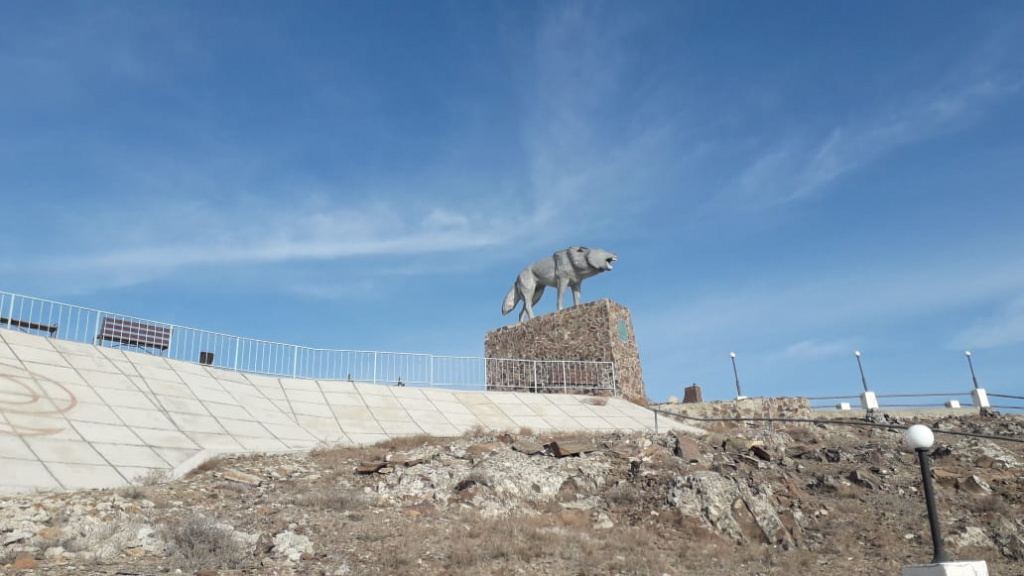
All the mountains in Mangystau are divided into ridges, there are five of them, the average height of the local mountains does not exceed 150-200 meters. The highest point is Beshokty (556 meters).
How the Japanese chose the Mangyshlak Peninsula
Tourists in Mangistau mostly come en masse on April 25. In the first place among lovers and connoisseurs of local nature – the Japanese. They are followed by the Italians in number. All of them are united by one thing-the desire to see the beauty of the local nature in its original form with their own eyes. The pioneers are rightfully Japanese journalists, who many years ago first came to Mangistau and filmed a series of documentaries about the local beauty of flora and fauna, in particular, they chose Tuzbayyr. And in Japan, on local TV channels, this film is played so often that a large queue of tourists who want to come to Kazakhstan has formed. Such a pilgrimage has been observed for more than 10 years. A huge number of tourists come in a group of 20 people and such an inexhaustible flow lasts until the end of September, says the guide Lyudmila. Foreign tourists come mainly for at least 5-7 days to fully enjoy the beautiful and sacred places of Mangystau. Every day, tourists have time to be in a variety of climatic conditions, starting with Bozzhyry, where tourists spend the night in tents under the open sky, ending with an ethno-aul with Kazakh hospitality and traditions and customs.
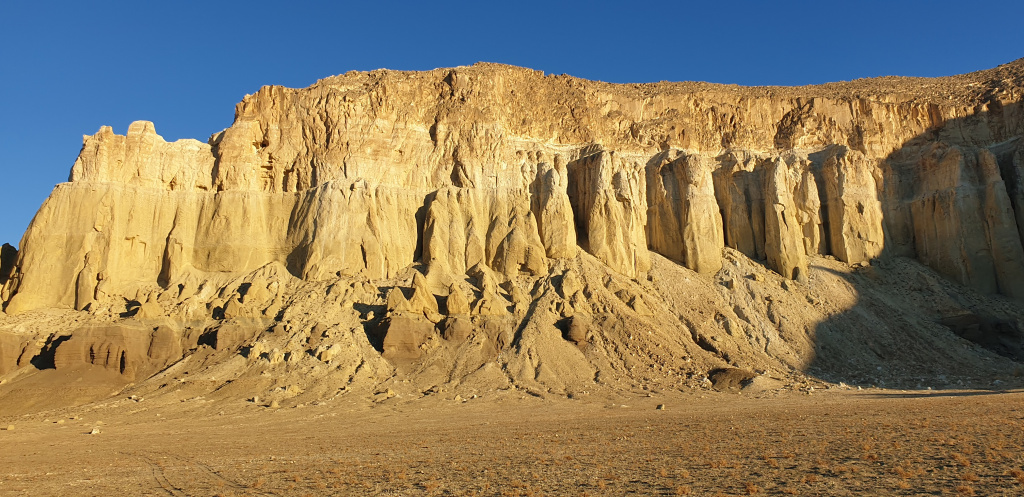
“Our tourism is developing, and very well. sometimes it even happens that we do not have time to fight them off,” jokes lyudmila. By the way, it turns out that Aktau has the only college in Kazakhstan, where specialists are trained for the tourism industry, starting from tour guides, ending with translators. Fortunately, there are plenty of hotels for receiving and accommodating tourists in Aktau.
we have already told that the territory of the mangystau region is 160 thousand square kilometers. Per 1 sq km, the population density is only 6-7 people, and in Japan this figure is off the scale for 250. Therefore, foreign tourists, in particular the Japanese, at the sight of so much free land, not built up, takes your breath away. Basjira, tuzbair spring, the Valley of balls – all of these in pristine condition leads to the indescribable delight of foreign visitors.
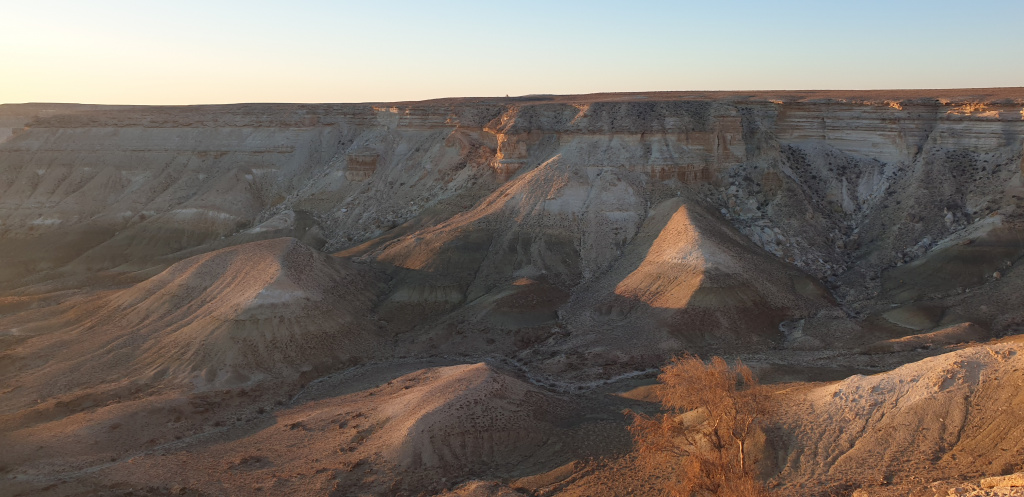
As for the prices for visiting local beauties, they are not unambiguous. And the pricing policy is influenced by many factors. First, the type of transport you choose. it is advisable not to come here on toyota-hayes, you need jeeps and paziki-all-terrain vehicles. To see Bozzhyra, tourists should be ready to pay 7500 tenge for a one-day guided tour. This does not include food. For 4900 or 5800 for a 12-hour excursion, you can go to Fort Shevchenko, Saura and other destinations.
Especially popular among the population and tourists is hunting with hunting birds-golden eagles. The difficult thing about this whole thing is that the golden eagle bird is tamed very young and the habituation lasts for several years in a row. Kusbegi almost the whole day does not depart from the birds, feeds, walks, sings songs, and even, sometimes, plays the dombra. Only then is the bird ready for training. A special cap is put on the head of a young golden eagle. Only then does the golden eagle go out with the bird on a real hunt. This is a truly spectacular action – hunting with a golden eagle. Next to berkutchi, local breeds of hunting dogs – tazy-always went.
Adrasan – healing herb-antiseptic
Here grow more than 50 species of plants, of which 10 are medicinal, including wormwood. A lot of herbs are dangerous – they are poisonous. Airspan or harmala, in fact a very poisonous herb. If you drink one sip of the drink from this herb, then after two minutes there is suffocation. In the Caucasus, Afghanistan Airspan mixed with a certain fat and used to treat tuberculosis. And in the old days, as they say, in the room where patients with cholera and plague lay, they smoked grass and many were cured safely. As it turned out, all thanks to the fact that adyapana has powerful antiseptic properties.

Also, the presence of water in the area was determined by the plants. If a huge amount of harmal was suddenly discovered, it was believed that water was necessarily present in this place. But it in the majority of cases brackish and suitable for watering the animals. On the contrary, where the shea grows, from which they make mats for the yurt, there is always fresh water.
Our ancestors were so well versed in plants and knew the secrets and recipes that mixing certain of them with each other got a variety of colors of paints. If you look closely, especially well-preserved multicolored ornaments in the Necropolises of the Mangystau region.
Another plant that was once found throughout the territory of Kazakhstan, and now is extremely rare, but has been preserved in the territory of the Mangystau region-ferula or stone resin. The seeds of the plant smell strongly of onions and garlic. And very well suited as a seasoning for meat dishes. You can buy it in the bazaars. It also has medicinal properties. Stone resin, which is extracted from the root of the plant, is comparable to birch sap. But the extraction of resin from this plant is more labor-intensive than birch sap. An interesting fact is that in India it began to be used in the treatment of cancer. And the most interesting thing is that stone resin gives juice only once in 10 years.
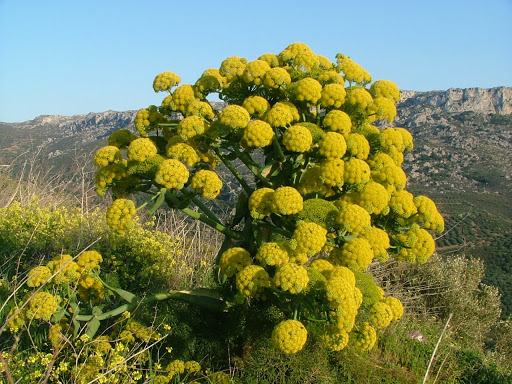
of particular interest is saxaul-a tree-shrub without shade and leaves, which sometimes grows up to 6 meters in height. it is good for them to heat the room, its energy is so strong that it easily replaces coal and it is good to cook food and brew tea in a samovar, it keeps the heat for a long time. The only thing you can’t make out of saxaul is furniture. Because it’s all twisted, brittle, not amenable to treatment. It is also impossible to determine the age of the saxaul, it has no rings. Because this amazing plant during periods of drought can freeze and not grow, Immediately after the rain, it can instantly grow by 30-40 centimeters.

In large numbers, there is such a plant as solyanka. This is not a dish you might have thought of at first. It grows in a brackish area, and accordingly feeds on these minerals. Therefore, when you rub the greasy leaves of solyanka for a long time, it feels as if the juice is about to splash.
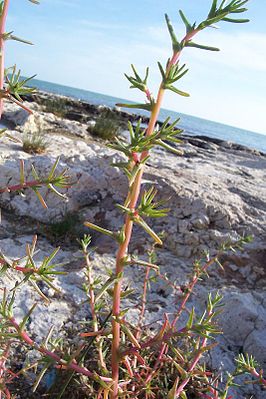
There is another herb class soups – ezhovnik leafless, in Kazakh it is called edigen. it is not just that the kazakhs called him. after all, this is a favorite plant of dogs, on which they relieve themselves of a small need. with its smell, this plant attracts animals.

People could use the same plant for medicinal purposes, just like poison. for example, itsigen in july-august, when blooming, young people covered the top with cauldrons, then dug in so as not to be blown away by the wind. So two months later, by the end of September, the young people returned to these fields and most carefully lifted the cauldrons from the windless side so that the smell did not blow in their direction, so as not to accidentally poison themselves. And the cauldron itself was covered with a layer of mosses during these two months. The moss was carefully cut, scraped, And Dried. Then the meat was sprinkled with moss, which was scattered behind the village, so that the wolves would not attack the flock of sheep. They ate the meat and died. Thus came the quiet death of the enemies of the household without the use of weapons. Also Ittigen helped treat Pets for scabies. They rubbed the skin with moss and the animal quickly recovered.
In a word, the Mangystau land grows exactly those plants that can adapt to the local harsh climate. Similarly, people. At first glance, the harsh, hard and harsh character of the local residents with a heartfelt conversation and communication are fully revealed and you understand that only a strong-willed person can survive in such vast expanses, with the philosophy of a nomad of the boundless Kazakh steppes, able to withstand not only the most severe natural and climatic tests, but also time.
Valley Cages. Mount Airakty
The famous Ukrainian writer and traveler Taras Shevchenko was exiled to “Kazakhstan’s Sakhalin” from 1850 to 1857. This is what Mangyshlak was called in those days. But before that time, Shevchenko spent three years in exile in the Orenburg-Orsk steppes. and he was exiled because of the work “dream”, where he ridiculed the tsars and landowners. He also mocked the queen very much. When Tsar Nicholas read the work, he became enraged and banned Shevchenko from writing and drawing for an indefinite time in the Orsk steppes. Here he accidentally got into the Aral expedition under the leadership of the scientist-navigator Butakov. As a member of the expedition, Shevchenko had to make sketches along the entire route. A little later, he was exiled to the Novopetrovskoye fortification, later it was Fort Shechenko. in 1851, a karatau expedition led by the scientist antipov was organized to mangyshlak in order to search for coal. He appeals to the commandant of the Novopetrovsky fortification, Mayevsky, to allocate several soldiers for work. One of them turns out to be Shevchenko. For three and a half months, like all soldiers, he was a digger. However, in the evenings, when he was devoted to himself, he quietly left the camp and engaged in his favorite occupation – drawing. All his many works were mostly faded and dull, and all because he could mostly work at this time of day, respectively, the pictures turned out like this. Among his famous works there are mountain Airakty (forked), valley Cages, Sherkala.

As our guide told us, a completely new two-day tour route will soon open in the footsteps of Taras Shevchenko and it will be called “Karatau expedition, in which Taras Shevchenko participated”. Tourists will stay in Fort-Shevchenko, Hanga Baba, Kargashty Aulie, valley, Valleys APA, Valley balls, Sherkala, Airakty. By the way, I must say that today in Mangistau tourist works on 30 main routes have been developed and are actively being conducted.
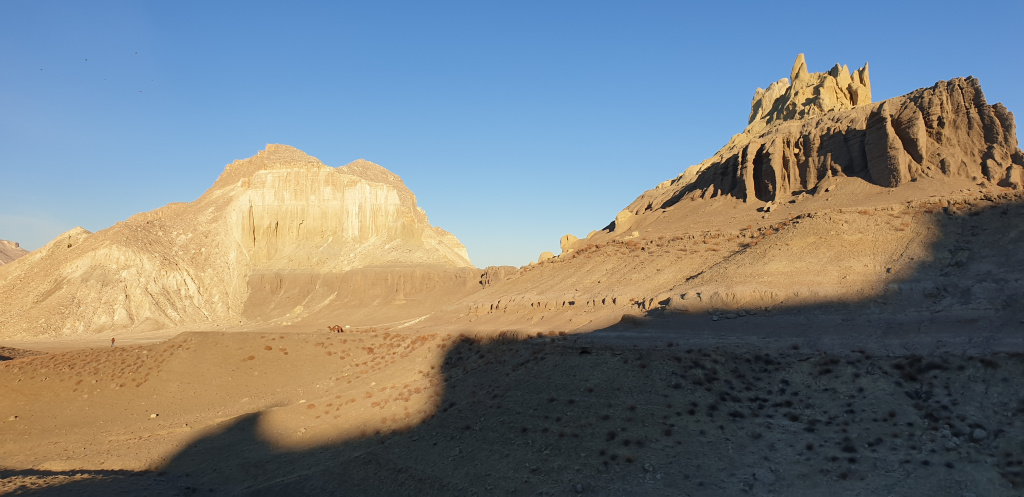
Mount Airakty (height 220 meters) from a bird’s eye view strongly resembles a crescent or horse shoe. In another way, this area is called Shomanai or the Valley of Castles, where you can “see” the domes, spires of all kinds of man-made castles.
at the very top of mount airakty, local archaeologist andrey astafyev and his son created a man-made miracle-they laid out a maze of stones in a circle. This is one of the highlights invented for tourists. And most importantly, standing on the edge of the cliff on earth can clearly see the drawings, so-called geoglyphs (drawings on the ground) in the form of a hand as a talisman, camel, Shanyrak, argali, galloping rider – logo Mangistau, Tengri – the cosmic man. Their dimensions can reach from 300 to 400 meters. These geoglyphs appear by drawing contours on the ground, then the marked grasses are pulled out, as a result, masterpieces of art appear, which are updated every two years. All this is done by a local archaeologist-enthusiast only for one purpose, in order to attract guests and foreign tourists as much as possible, so that they are not bored here as much as possible. We meet in the valley and turtles, gerbils, gophers, peg, potaracke. And all the drawings are specially applied in the direction of the mountain, so that everyone who climbs the mountain can see them.
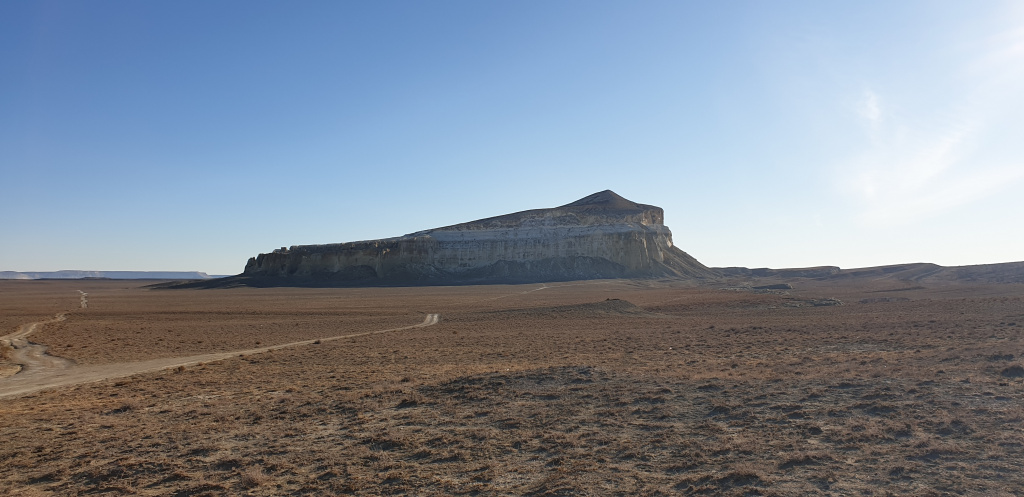
It was under the leadership of A. Astafyev that the bodies of two shamans – representatives of white and black magic-were found in the necropolis of Uly Kundyk. And just recently, he made an excavation at the site of “Altyn Kazgan”, where unique things were found-jewelry, gold dishes. In addition, he also discovered a small piece of the surviving Khiva road of the Great Silk Road. This piece (500 meters) the caravan road is paved with cobblestones. I would like to note that all the main excavations on the Mangistau land in recent years were conducted under the strict guidance of Astafyev, our guide tells with delight.
Especially popular among the population and tourists is hunting with hunting birds-golden eagles. The difficult thing about this whole thing is that the golden eagle bird is tamed very young for several years in a row. Kusbegi is almost the whole day with the bird, feeds, walks, sings songs, and even plays the dombra. Only after that the bird is ready for training, a cap is put on the head of the young golden eagle. Only then does the golden eagle go out with the bird on a real hunt. This is a truly spectacular event – hunting with a golden eagle. Next to berkutchi, local breeds of hunting dogs – tazy-always went.
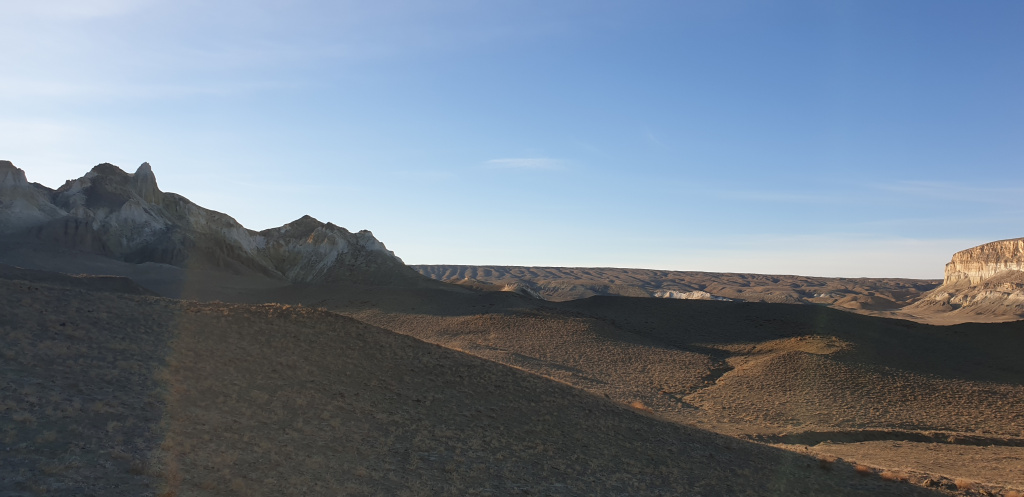
Sherkala
there is a beautiful legend that in ancient times, local tribes during the battle with enemy fighters hid in the mountainous area, which was full of caves and tunnels. months pass, and the enemies can not understand how people can live in this cave for so long without water and food. As it turned out, from the very top to the bottom in length 195 meters ran a stream, there was also a well. Among civilians turned out to be a traitor who has told about the well. Then the soldiers began to make a tunnel and cut the rope to the well, thereby blocking access to water. Then the war-Dzhigits of the local tribe find an underground tunnel. to save the kindred. When all the inhabitants have been taken out of the mountain, the tunnel is filled up with stones. All the soldiers fighting on the battlefield fell. And the enemies, having broken into the cave, did not find a secret exit from the cave. For its steadfastness and bravery, the mountain has since been nicknamed Sherkala or lion city. After all, it is vaguely reminiscent of the lion and the sphinx. Local old-timers say that almost all underground mosques are connected by tunnels. And according to one legend, next to the mountain was a caravanserai on the Silk Road, which was called Sherkala.
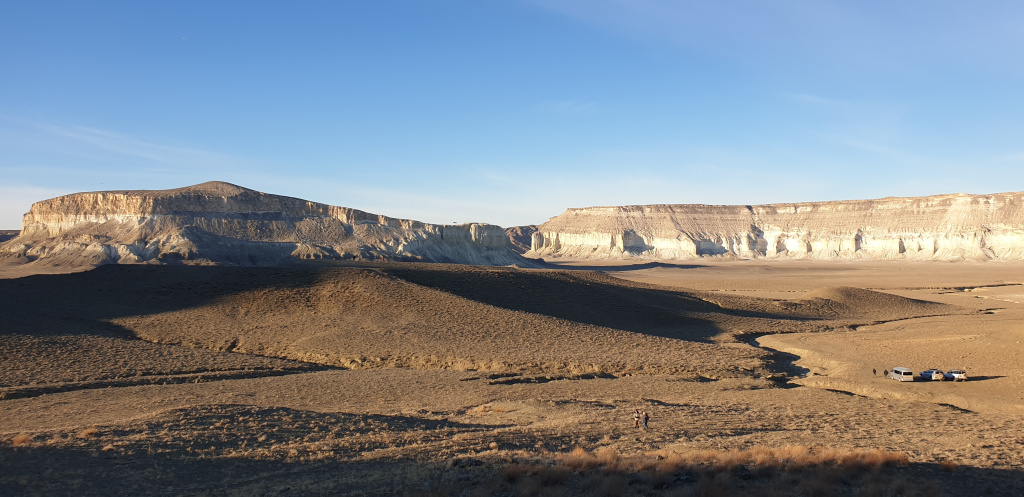
Torysh or the Valley of the giants
Any shepherd in Mangystau to the question of where did the stone balls come from in the area of Torysh (camp), will answer that they attacked from the sky. And there is another legend that when there was a battle, the enemy force began to surpass and win the battle. Then the locals prayed to heaven for help. The Almighty heard the plea, turned the enemy squad into stone balls. According to the hypothesis of a local scientist Tarasenko, in Mangistau there are a lot of voids under the ground, which stretch for kilometers. It is in these voids that the earthball is born, which rolls through these voids for millions of years. When there is an electrical discharge in these voids like thunder and lightning, then the ball is knocked out, which is called the concretion.
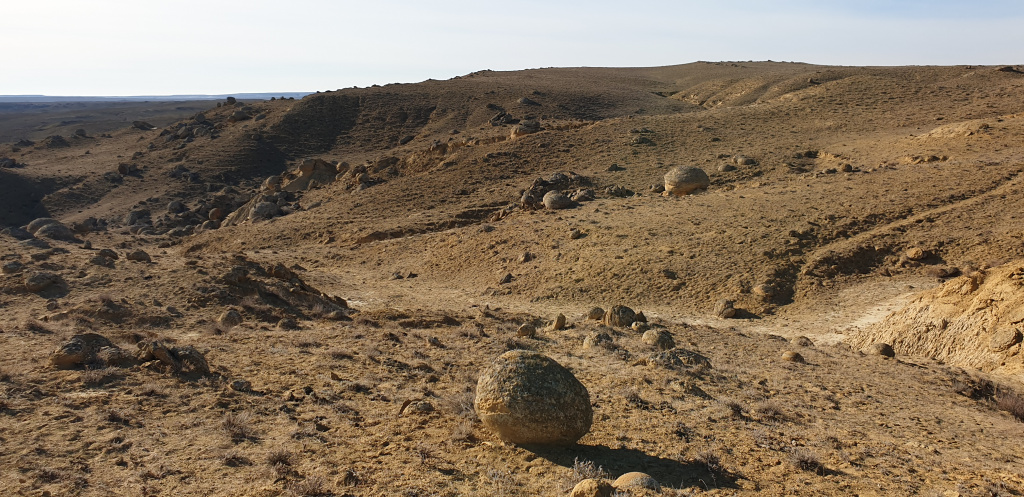
Another version says that at the bottom of the Tethys Ocean, during volcanic eruptions and earthquakes, balls began to form around extinct mollusks and mammals. The sand clung, and the wind, sun, and water did their work. As a result, such a huge growth of earth was formed around the snail, and thus the supposedly current spherical stones appeared.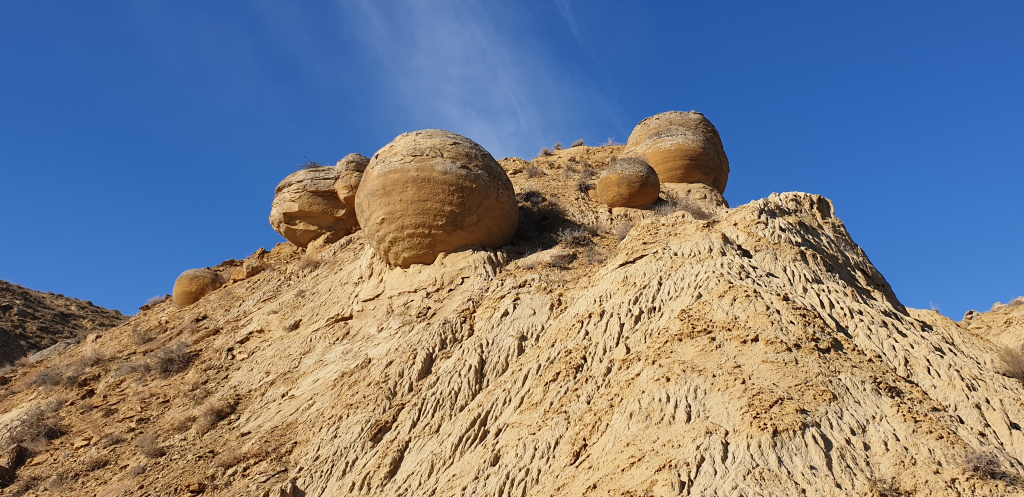
But still, many scientists agree that all the balls in the Torysh Valley are the result of volcanic actions of nature, especially in the Bozzhyr valley. Surprisingly, even if it is negligible, all the nodules grow and increase in size. And inside each ball there are absolutely all the chemical elements of the periodic table. The most interesting thing is that each ball resembles the shape of animals and can reach a length of up to 4 meters in diameter.
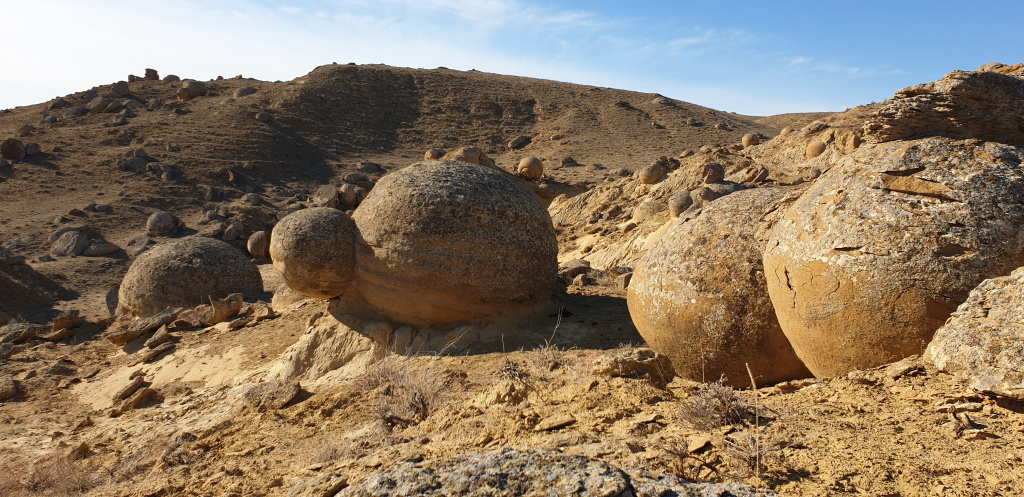
By the way, a similar valley of balls is found in Egypt. But there they are eaten away by the winds, having lost their original form, beauty and charm.

Information taken from the site EL.KZ
Author-Rauan Iskaliev














































